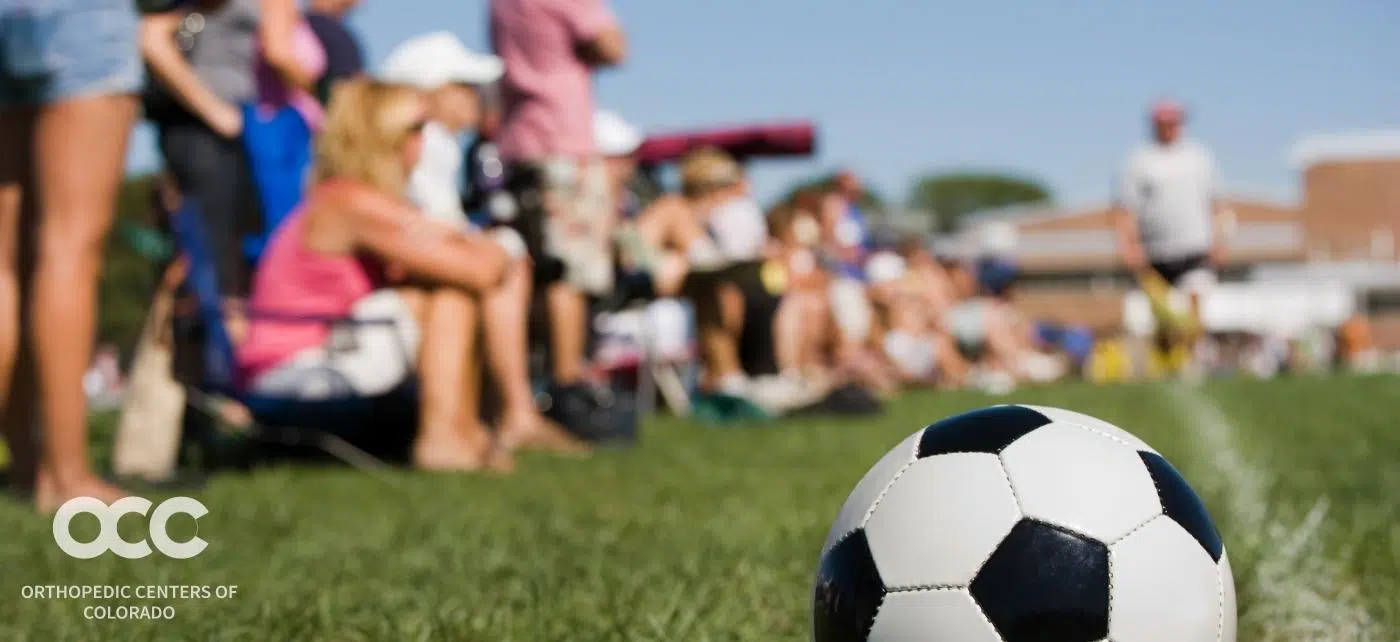Whether you’re a life-long athlete or an armchair quarterback, if you are a parent, you likely keep a very close eye on your own young athletes. From workouts to developmental progress to performance, parents have a vested interest in their children’s athletic experience. And that’s a good thing, says Dr. James Ferrari, Advanced Orthopedic surgeon. “Young athletes absolutely need their parents’ support and guidance as they navigate their sports experiences – even if the parent knows nothing about that particular sport.”
But there’s definitely a right way to direct your child’s youth sports activities. As sports become more sophisticated, so too do the practices that should be adopted by coaches, players, and parents, which means that parents should keep two key things in mind:
- Take a balanced approach to sports participation, and
- Work as a team: listen to your child, and lean on your child’s network of coaches, physicians, and trainers to support a positive experience and prevent injuries
A Balanced Approach
According to the NCAA, just five percent of high school athletes will play college sports – and even fewer – around 2 percent will get a scholarship. This surprises many parents who think their child’s focus on a certain sport early in life will become their golden ticket to a full-ride athletic scholarship.
Sure there are several marquee athletes who specialized at an early age, but most did not. In fact, a group of major professional sports organizations have recently come together to point out many of the good reasons why kids should not specialize in one sport early in life, and we agree:
- Specialization can lead to overuse injuries – i.e., the injuries from repetitive wear and tear on tendons, bones, and joints. Research shows that young athletes who specialized in one sport had a higher occurrence of severe overuse injuries. Common overuse injuries include tennis elbow, swimmer’s shoulder, youth pitching elbow, runner’s knee, jumper’s knee, Achilles tendinitis, and shin splints.
- The campaign shows that kids who do not specialize – especially before age 12 – benefit from “better performance, less burnout, and a better opportunity for more life-long enjoyment in sports.”
- Free play has been known to produce higher levels of physical activity than organized sports. It allows kids to try a wide variety of activities, develop many fundamentals – like footwork or hand-eye coordination – and do the one thing that kids don’t get enough of these days – play.
Work as a Team
Start by remembering that your child is quite literally the key player in what, how and when he or she should participate. Encourage your child to communicate his or her preferences and foster an open dialogue about levels of fatigue or pain. Many kids feel undue pressure from teammates and coaches to compete. Parents can provide a counterbalance to that pressure by serving as a sounding board and resource. When in doubt, ask a physician or sports medicine specialist – we’re on your team.
Even the most involved and educated parent needs support. Experts at all levels of youth, collegiate, and professional sports have begun to take a much more active role in how youth sports impact kids in training, practice, and competition. Talk to your child’s coach, trainer, and physician if you have a concern, and take advantage of the many free resources available online:
STOP Sports Injuries is an excellent resource for parents and professionals alike, as is SafeKids.org. STOP Sports Injuries offers the following common-sense tips for preventing and treating an overuse injury:
- Cutting back the intensity, duration, and frequency of an activity
- Adopting a hard/easy workout schedule and cross-training with other activities to maintain fitness levels
- Learning about proper training and technique from a coach or athletic trainer
- Performing proper warm-up activities before and after
- Using ice after activity for minor aches and pain
- Using anti-inflammatory medications as necessary
They also recently noted that the most youth injuries occur during the heat of August, citing new research from The American Journal of Sports Medicine.
Here in Colorado, the Colorado High School Activities Association works closely with local medical experts to maintain the safety of high school athletes, and the National Athletic Trainers Association is naturally on top of key sports medicine issues. Most recently, they were applauded for recently updated guidelines on handling potential spinal cord injuries on the playing field, and some staff at Advanced Orthopedic has already had hands-on training with these new guidelines.
So go out and support your child’s athletic interests, and remember that whether that support is in the form of volunteering, cheering, or teaching your child, it’s the role of a supportive parent that will truly make the biggest impact on your child’s athletic experience.







